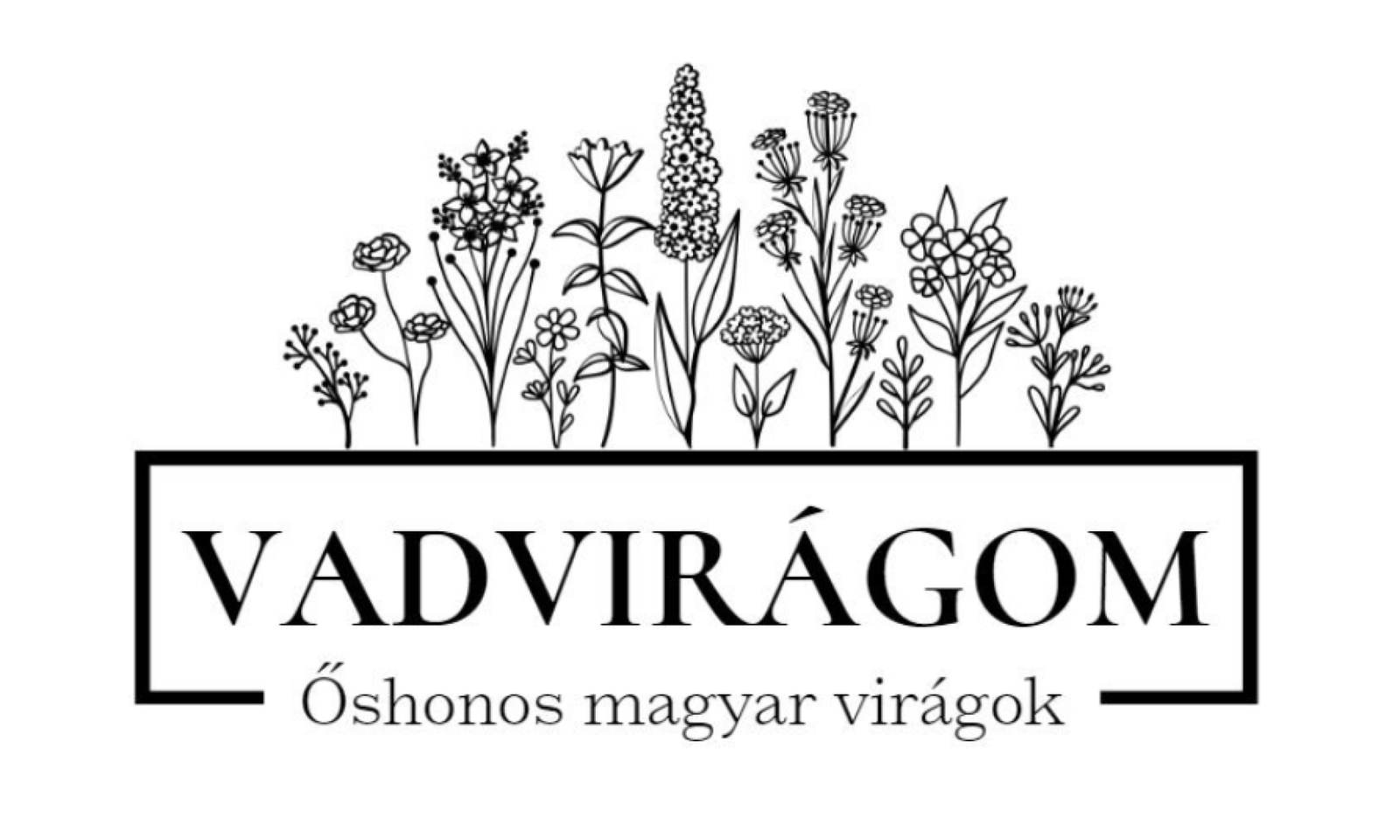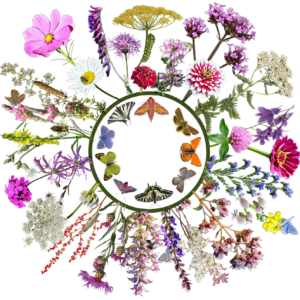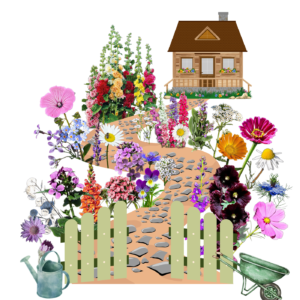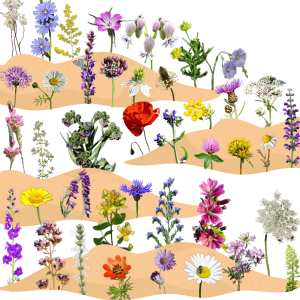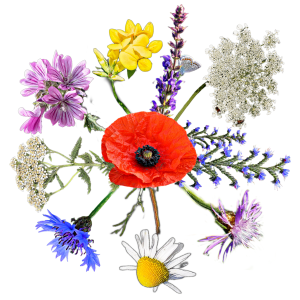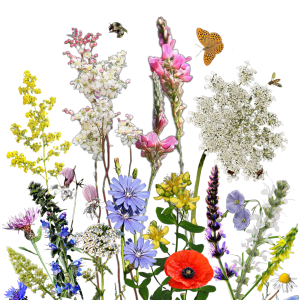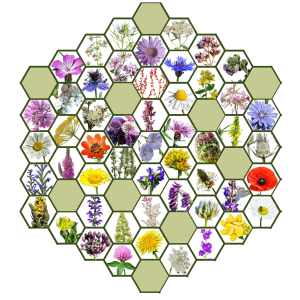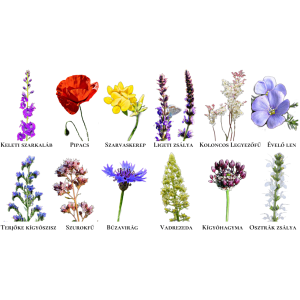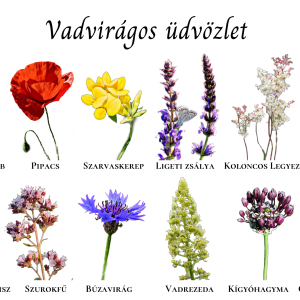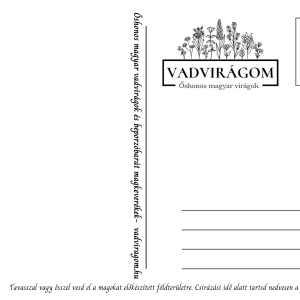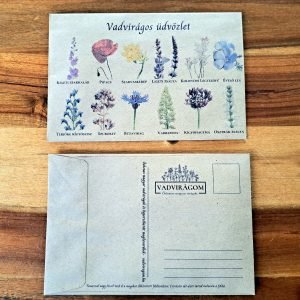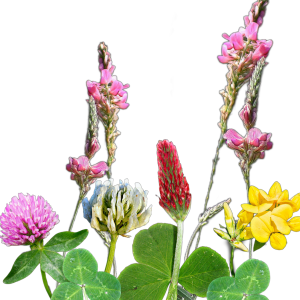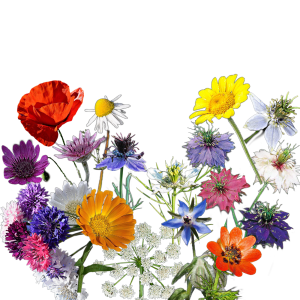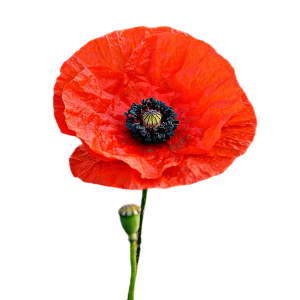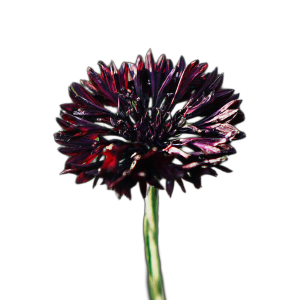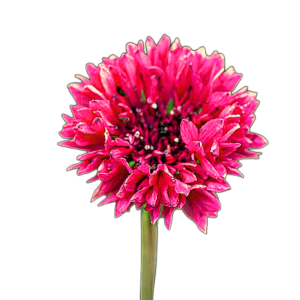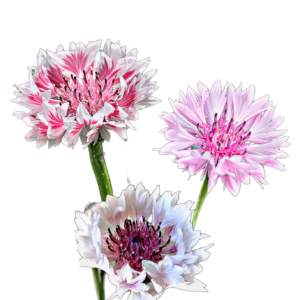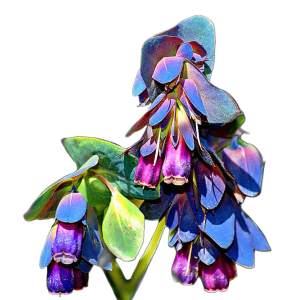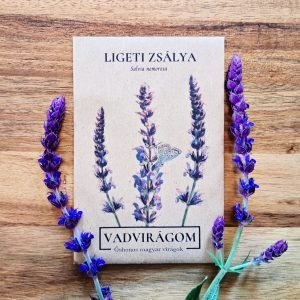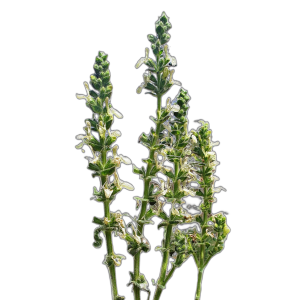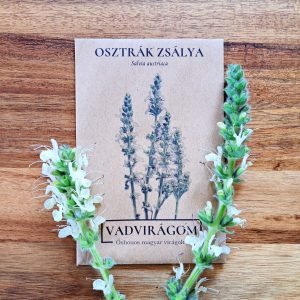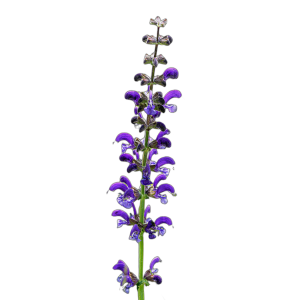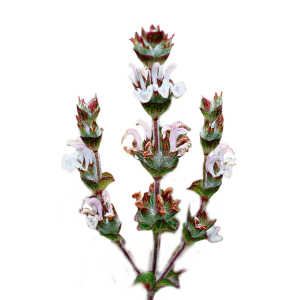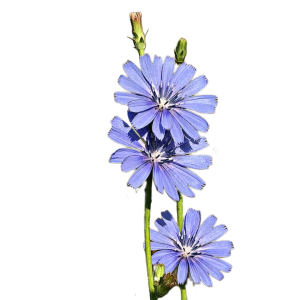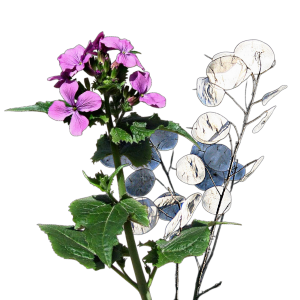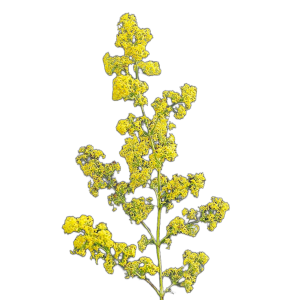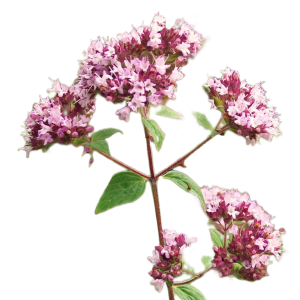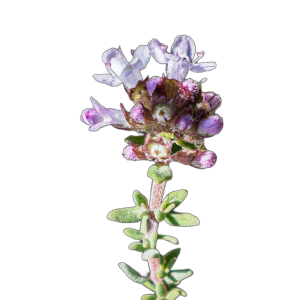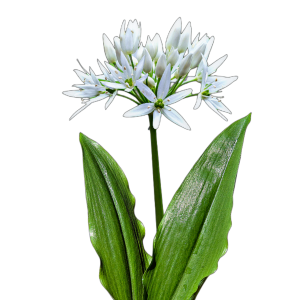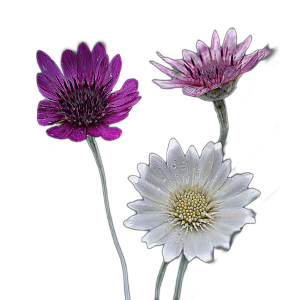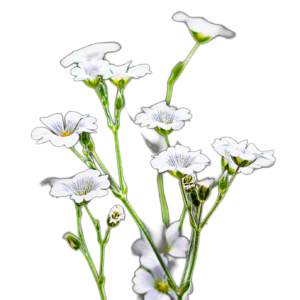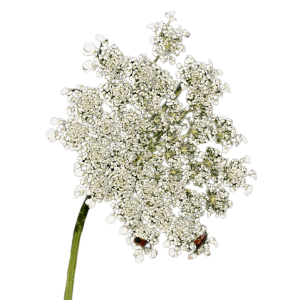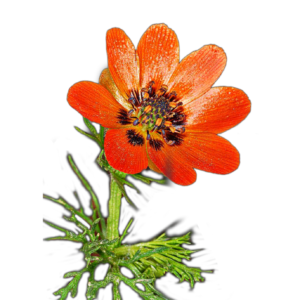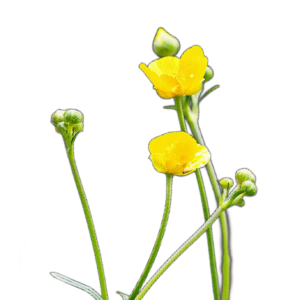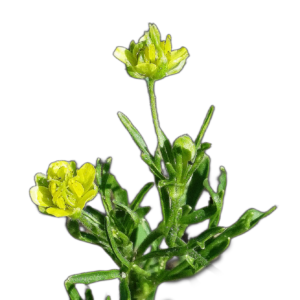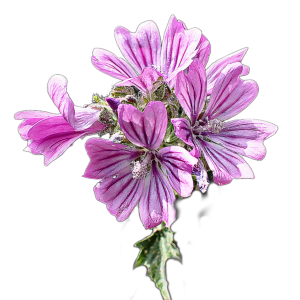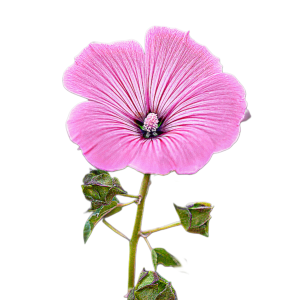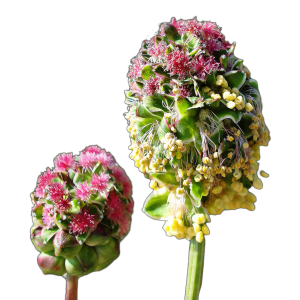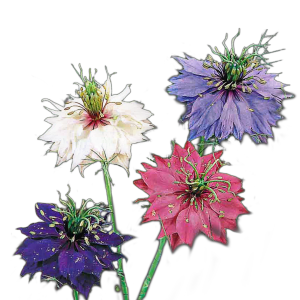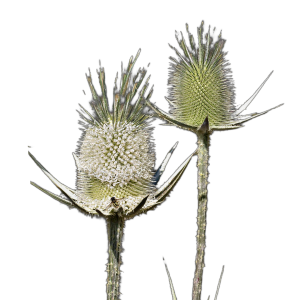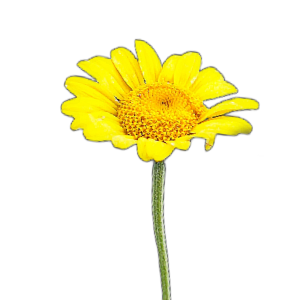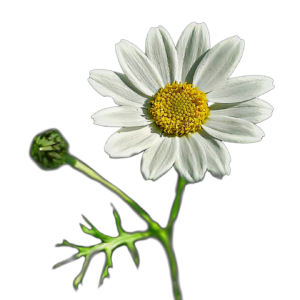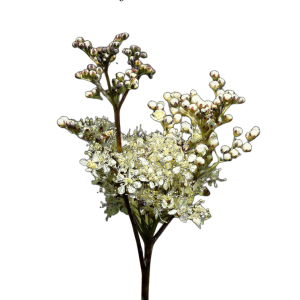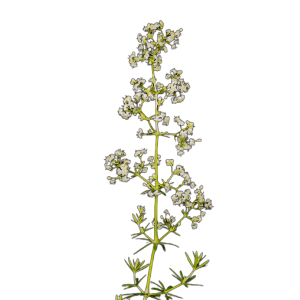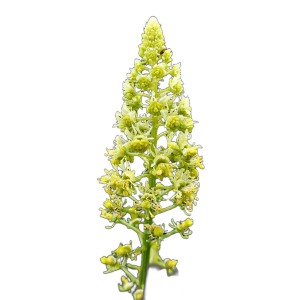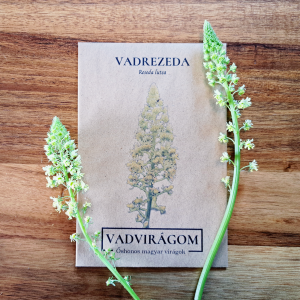1g
“Erdei mályva (Malva sylvestris) 1g, ~230 mag” a kosárba helyezve. Kosár
-
-
Select options
There are several variations of this product. The variants can be selected on the product page
- Add to wishlistAdd to wishlist
- also for balcony box, seed mix for children
GARDEN READINGS - seed mix for children
- 950 Ft - 2.500 Ft
- This seed mix has been specially created for children to get them interested in gardening and to teach them to love nature. It's also very important for us to introduce children to the wonder of gardening flowers from a young age, and it can be a great family activity to garden with the little ones. The mix is free from toxic plants and we've tried to include hardy, easy-to-care-for species,...
Add to wishlistAdd to wishlist -
Select options
There are several variations of this product. The variants can be selected on the product page
-
-
Select options
There are several variations of this product. The variants can be selected on the product page
- Add to wishlistAdd to wishlist
- butterflies' favourite, butterfly attractant seed mix, seed mix
MAPMAKER 2.0 - caterpillar, hemp and moth seed mix (NEW!)
- 950 Ft - 8.000 Ft
- Butterfly Lure 2.0 is a seed mix for caterpillars, butterflies and sedges, the result of 1 year of research, which has resulted in a seed mix of the best nectar-producing and nutritious plant species. The majority of moths and sedges are very selective when they are caterpillars and have only a few or only 1 or 1 species of food plant: this is the plant on which the moth lays its eggs and the leaves of this plant are eaten by the caterpillars.
Add to wishlistAdd to wishlist -
Select options
There are several variations of this product. The variants can be selected on the product page
-
-
Select options
There are several variations of this product. The variants can be selected on the product page
- Add to wishlistAdd to wishlist
- seed mix, nostalgic seed mix, cut flower
MAMA GARDEN - nostalgic seed mix (NEW!)
- 950 Ft - 5.000 Ft
- The Mama's Garden nostalgic seed mix is a true love project, reaching back to the roots where many of our passion for flowers began: our Mama's garden. With this seed mix I would like to thank and pay tribute to our grandmothers, for letting us learn from them about gardening practices, for introducing us to those nostalgic, now partly forgotten flowers and for laying the foundations for our passion for gardening. So I have chosen species that for me are typical of the old...
Add to wishlistAdd to wishlist -
Select options
There are several variations of this product. The variants can be selected on the product page
-
-
Select options
There are several variations of this product. The variants can be selected on the product page
- Add to wishlistAdd to wishlist
- butterflies' favourite, seed mix
BOKRÉTA - cut flower seed mix (NEW!)
- 950 Ft - 4.000 Ft
- The Bokréta cut flower seed mix is designed for flower and bouquet lovers. It's also a perfect gift for women's day or mother's day :) For the price of half a bunch, we will have a lot of bunches of flowers, not only in the year of sowing, but also in the years to come. The Bokréta seed mix is a mixture of 25 species of annual, biennial and perennial flowers, with a predominance of...
Add to wishlistAdd to wishlist -
Select options
There are several variations of this product. The variants can be selected on the product page
-
-
Select options
There are several variations of this product. The variants can be selected on the product page
- Add to wishlistAdd to wishlist
- 40 native Hungarian wild flowers for sandy soil, seed mix
BUCKALAKO seed mix
- 950 Ft - 16.000 Ft
- By popular demand, the wildflower meadow or beehive seed mix for sandy soil is ready! Buckalako seed mix contains 40 native Hungarian species that are drought tolerant and thrive in sandy soils. During the germination period it is important to keep the area moist: in autumn and spring for autumn sowing and in spring for spring sowing. Once the seedlings have germinated, they require no or very minimal watering (of course, months of drought...
Add to wishlistAdd to wishlist -
Select options
There are several variations of this product. The variants can be selected on the product page
-
-
Select options
There are several variations of this product. The variants can be selected on the product page
- Add to wishlistAdd to wishlist
- 10 native Hungarian wildflowers, seed mix
BEE 2.0 - Bee-feeding seed mix
- 900 Ft - 13.000 Ft
- Make your garden wild with this annual herbaceous seed mix of 10 native Hungarian species and welcome beneficial pollinators to your garden! This mix is a taster into the world of bee-keepers: we have selected 10 species that are pollinator favourites and will make beautiful ornaments to your garden with their long flowering. It includes annual, biennial and perennial flowers. Features: life cycle: annual, biennial, perennial flowering time: may-october size:...
Add to wishlistAdd to wishlist -
Select options
There are several variations of this product. The variants can be selected on the product page
-
-
Select options
There are several variations of this product. The variants can be selected on the product page
- Add to wishlistAdd to wishlist
- 20 native Hungarian wild flowers, seed mix
POLLENANYO 2.0 - beekeeping seed mix
- 900 Ft - 14.500 Ft
- One of the smaller members of the 10-60 species bee-feeding mix range is the pollinator-friendly Pollen Mother seed mix. Go wild with this seed mix and welcome beneficial pollinators to your garden! The more species a mix contains, the more native pollinator species it supports, Pollenanyó pollinator-friendly seed mix contains the best 20 native Hungarian wildflowers for you and your pollinators. And they are beautiful too :) Features:...
Add to wishlistAdd to wishlist -
Select options
There are several variations of this product. The variants can be selected on the product page
-
-
Select options
There are several variations of this product. The variants can be selected on the product page
- Add to wishlistAdd to wishlist
- 30 native Hungarian wild flowers, seed mix
BEPORZÓNA 3.0 - beekeeping seed mix
- 900 Ft - 16.000 Ft
- One of the middle members of the 10-60 species blend series, Beporzóna 3.0 is a seed blend of 30 indigenous Hungarian beekeepers. Wild your garden with this seed mix and welcome beneficial pollinators to your garden! The more species a mix contains, the more native pollinator species it supports. This mix has been developed with the above in mind, and we have also tried to select species that many specialist...
Add to wishlistAdd to wishlist -
Select options
There are several variations of this product. The variants can be selected on the product page
-
-
Select options
There are several variations of this product. The variants can be selected on the product page
- Add to wishlistAdd to wishlist
- 40 Hungarian and European wild flowers, seed mix
NEK-TÁR 3.0 - beekeeping seed mix
- 950 Ft - 17.500 Ft
- Make your garden wild with this annual-biennial-annual-evergreen bee-feeding seed mix of 40 species of Hungarian and European wildflowers and welcome beneficial pollinators to your garden! In addition to the Beporzone of 30 native wildflower species, this mix also includes some great pollinator-attracting Mediterranean wildflowers such as borage, marigold, garden ladybird and anise. It also contains several annual European wildflower species,...
Add to wishlistAdd to wishlist -
Select options
There are several variations of this product. The variants can be selected on the product page
-
-
Select options
There are several variations of this product. The variants can be selected on the product page
- Add to wishlistAdd to wishlist
- 50 species of native wild flowers, seed mix
BEES NO? - beekeeping seed mix
- 950 Ft - 19.000 Ft
- One of the larger members of the 10-60 species beekeeping mixture series, Méh ne? is a native Hungarian beekeeping seed mixture of 50 species (the largest native Hungarian member of the series). Wild your garden with this seed mix and welcome beneficial pollinators to your garden! The more species a mix contains, the more native pollinator species it supports. This blend has been developed with the above in mind,...
Add to wishlistAdd to wishlist -
Select options
There are several variations of this product. The variants can be selected on the product page
-
-
Select options
There are several variations of this product. The variants can be selected on the product page
- Add to wishlistAdd to wishlist
- 60 native European wild flowers, seed mix
ZÜMMÖGDE - beekeeping seed mix
- 950 Ft - 20.500 Ft
- The largest member of the 10-60 species beekeeping seed mixture series, Zümmögde, is a native Hungarian beekeeping seed mixture of 60 species (the largest member of the series). Wild your garden with this seed mix and welcome beneficial pollinators to your garden! The more species a mix contains, the more native pollinator species it supports. This mix has been developed with the above in mind, and we have tried to include...
Add to wishlistAdd to wishlist -
Select options
There are several variations of this product. The variants can be selected on the product page
-
-
Add to basket
- Add to wishlistAdd to wishlist
- seed mix of 12 native Hungarian species, gift, postcard, seed mix
WILDFLOWER GREETINGS POSTCARD
- 950 Ft
- Want to send a unique wildflower greeting and help more people rediscover Hungarian wildflowers and support native pollinators? In this postcard bag, we've hidden a 1 gram mix of our most wonderful native Hungarian wildflower blends that is sure to delight the recipient. Write the postcard, send it in the post and wait for the appreciative feedback.
Add to wishlistAdd to wishlist -
Add to basket
-
-
Select options
There are several variations of this product. The variants can be selected on the product page
- Add to wishlistAdd to wishlist
- can be sown between grass, seed mix, green manure
NITRO seed mix
- 1.750 Ft
- Want to improve soil quality naturally while benefiting pollinators? That's exactly what our 5-species green manure seed mix is for! Each species enriches the soil with nitrogen, increasing future yields. Forget fertilizers and use an ecologically sustainable solution while supporting pollinators. Characteristics: life cycle: annual, perennial flowering time: may-october size: 10-60 cm soil: dry, average growing conditions: sunny pollination factor: 9/10...
Add to wishlistAdd to wishlist -
Select options
There are several variations of this product. The variants can be selected on the product page
-
-
Select options
There are several variations of this product. The variants can be selected on the product page
- Add to wishlistAdd to wishlist
- 15 annual Hungarian and European wildflowers for the balcony or window box, seed mix
Oh, ROMERO annual seed mix - also for the balcony
- 950 Ft - 2.750 Ft
- What? Bee-keeper on balcony or balcony? Yes! Just like the highly successful Yarrow seed mix, you can make your garden, balcony or balcony go wild with the annual seed mix of 13 native Hungarian and European species of Oh, Romeo and welcome beneficial pollinators to your garden! Can also be sown in a balcony box. This mix also includes some very colourful, cultivated varieties of some of our favourite flowers. It's made up of easy-to-grow varieties, so if you...
Add to wishlistAdd to wishlist -
Select options
There are several variations of this product. The variants can be selected on the product page
-
-
Add to basket
- Add to wishlistAdd to wishlist
- also for window box, annual, bee-keeper, native
Poppy (Papaver rhoeas) 1g, ~9000 seeds
- 875 Ft
- Who should be introduced to the most iconic wildflower, the reddish pearl of the wheat fields? Fortunately, wildflowers, including poppies (Papaver rhoeas), are making a comeback in gardens these days and are slowly losing their weed status, as their early flowering makes them a very important food source for many of our solitary bees. Properties: other names: poppies, stinking poppies, poppies, gooseberries, dandelion flowers, blood poppies, wild poppies Latin name: Papaver rhoeas family...
Add to wishlistAdd to wishlist -
Add to basket
-
-
Add to basket
- Add to wishlistAdd to wishlist
- also for window box, annual, bee-keeper, native
Poppy colour mix (Papaver rhoeas "Shirley Single Mix") 1g, ~9000 seeds
- 875 Ft
- Who should be introduced to the most iconic wildflower, the reddish pearl of the wheat fields? Fortunately, wildflowers, including poppies (Papaver rhoeas), are making a comeback in gardens these days and are slowly losing their weed status, as their early flowering makes them a very important food source for many of our solitary bees. This mixed poppy colour mix consists mainly of pink flowers, but other colours may also be available. It has a really light, soft and graceful look...
Add to wishlistAdd to wishlist -
Add to basket
-
-
Add to basket
- Add to wishlistAdd to wishlist
- also for window box, annual, bee-keeper, native
Cornflower - black (Centaurea cyanus "Black Boy") 1g, ~220 seeds
- 875 Ft
- The cornflower (Centaurea cyanus) is one of our best known and most loved wild flowers, along with the poppy. Loved by pollinators, it flowers for a relatively long time in the garden. It is a medicinal herb, its flowers are edible, it used to be used to make dye, but it is also excellent for tea, which also gives it a beautiful colour. Early spring sowing with early flowering is an important time for pollinators, but it can also be sown in the autumn, in which case it will have bushier growth in spring/early summer. This...
Add to wishlistAdd to wishlist -
Add to basket
-
-
Add to basket
- Add to wishlistAdd to wishlist
- also for window box, annual, bee-keeper, native
Cornflower - pink (Centaurea cyanus "Red Ball") 1g, ~220 seeds
- 875 Ft
- The cornflower (Centaurea cyanus) is one of our best known and most loved wild flowers, along with the poppy. Loved by pollinators, it flowers for a relatively long time in the garden. It is a medicinal herb, its flowers are edible, it used to be used to make dye, but it is also excellent for tea, which also gives it a beautiful colour. Early spring sowing with early flowering is an important time for pollinators, but it can also be sown in the autumn, in which case it will have bushier growth in spring/early summer. This...
Add to wishlistAdd to wishlist -
Add to basket
-
-
Add to basket
- Add to wishlistAdd to wishlist
- also for window box, annual, bee-keeper, native
Cornflower - pink colour mix (Centaurea cyanus "Classic romantic") 1g, ~220 seeds
- 875 Ft
- The cornflower (Centaurea cyanus) is one of our best known and most loved wild flowers, along with the poppy. Loved by pollinators, it flowers for a relatively long time in the garden. It is a medicinal herb, its flowers are edible, it used to be used to make dye, but it is also excellent for tea, which also gives it a beautiful colour. Early spring sowing with early flowering is an important time for pollinators, but it can also be sown in the autumn, in which case it will have bushier growth in spring/early summer. This...
Add to wishlistAdd to wishlist -
Add to basket
-
-
Add to basket
- Add to wishlistAdd to wishlist
- 10/10 pollinator factor, also for window box, annual, bee-feeder
Lily of the valley (Cerinthe major "Purpurascens) 1g, ~20 seeds
- 875 Ft
- Cerinthe major is a native European flower, the cultivated form of which is this purple, "Purpurascens" colour variation. We also have the wild freckle-leaved Cerinthe minor, which has very interestingly mottled leaves, so you can recognise it from a distance. A close relative of this native species is this European annual species, but while the Hungarian species has yellow flowers, the 'Purpurascens' species...
Add to wishlistAdd to wishlist -
Add to basket
-
-
Add to basket
- Add to wishlistAdd to wishlist
- 10/10 pollinator, perennial, butterfly favourite, bee-feeder, native
Ligeti sage (Salvia nemorosa) 1g, ~925 seeds
- 875 Ft
- Lime sage (Salvia nemorosa) is one of our most beautiful wild flowers, and its cultivars can be found in many garden shops. No garden should be without it, it is a great favourite with pollinators. The various buttercups are particularly fond of it (see photo), but it is also a great favourite of bumblebees. Lime sage is less well known for its medicinal properties, but like medicinal sage it can be used for its antiseptic properties, or as a herb (although it is also a...
Add to wishlistAdd to wishlist -
Add to basket
-
-
Add to basket
- Add to wishlistAdd to wishlist
- perennial, herb, bee-keeper, native
Austrian Sage (Salvia austriaca) 1g, ~500 seeds
- 875 Ft
- The Austrian sage (Salvia austriaca) is a beautiful native wildflower, unknown to many, that really should be in our gardens. Like the Hungarian sage, it is white in colour, but less branched and taller than the Lignet sage. Like all sages, it is one of our most attractive wild flowers and a great favourite with pollinators, especially bumblebees. Many of our wild flowers were first described by a Franco-Austrian botanist N.J.Jacquin,...
Add to wishlistAdd to wishlist -
Add to basket
-
-
Add to basket
- Add to wishlistAdd to wishlist
- 10/10 pollinator, perennial, butterfly favourite, bee-feeder, native
Sage (Salvia pratensis) 1g, ~500 seeds
- 875 Ft
- The field sage (Salvia pratensis) is one of our most beautiful wild flowers, just like the sage of the Liga. The field sage is slightly larger in stature and has larger flowers than the sage, but has a similar purple colour. You may also see horticultural varieties from time to time. Sage is known for its interesting pollination mechanism, whereby the bee crawling in for nectar moves the lower stamen, which moves the upper stamen, which then spreads the nectar on the pollinator's back...
Add to wishlistAdd to wishlist -
Add to basket
-
-
Add to basket
- Add to wishlistAdd to wishlist
- perennial, bee-keeper, native
Hungarian sage (Salvia aethiopis) 1g, ~425 seeds
- 875 Ft
- The Hungarian sage (Salvia aethiopis) is one of our rare sage species, which is white in colour like the Austrian sage, but shorter and more branched. Its leaves are whitish and mottled. Interestingly, it is called African Sage in English, in reference to its wide distribution, as it is also found in North Africa. Contrary to its name, it is not indigenous to our country, having probably been brought here from southern Europe during the Turkish occupation. It blooms for months and, like other sage species,...
Add to wishlistAdd to wishlist -
Add to basket
-
-
Add to basket
- Add to wishlistAdd to wishlist
- 10/10 pollinator, perennial, bee-feeder, native
Common yarrow (Achillea millefolium) 1g, ~7000 seeds
- 875 Ft
- Common yarrow (Achillea millefolium) is well known and is one of our best pollinator wildflowers. Its long flowering period makes it particularly valuable. Evergreen, it is also an excellent choice for lawns. It is a medicinal herb and can even be made into tea. Properties: other names: medicinal yarrow, shagbark, yarrow, mouse-tail, thousandleaf, medicinal thousandleaf, turkey-grass Latin name: Achillea millefolium family: Asteraceae life: perennial flowering time: June-October size: 40-60 cm (flowers lower in mown lawns) soil: dry, average growing area: sunny other: herb...
Add to wishlistAdd to wishlist -
Add to basket
-
-
Add to basket
- Add to wishlistAdd to wishlist
- perennial, bee-keeper, native
Chickweed (Cichorium intybus) 1g, ~660 seeds
- 875 Ft
- A well-known wildflower is the field marigold (Cichorium intybus), which attracts pollinators with its pollen. Its flowering in autumn is an important time for pollinators. It was also used to make chicory coffee, but nowadays the cultivated variety is used for this purpose. Its pollen is white in colour. Properties: other names: thistle, wild chicory, endive, yucca, katanchory, coffee-cake, blue flower, sunflower, sunflower-flowering grass Latin name: Chicorium intybus family: Asteraceae life: perennial flowering time: July-October size:80-100 cm...
Add to wishlistAdd to wishlist -
Add to basket
-
-
Add to basket
- Add to wishlistAdd to wishlist
- also in a window box, edible flower, biennial
Pansy (Viola arvensis) 1g, ~1500 seeds
- 875 Ft
- The field pansy (Viola arvensis) is a native Hungarian wildflower. Its relative, the tricolour pansy, is perhaps one of our most well known and loved flowers, and fortunately it is often planted in gardens. It is a particular highlight of early spring, as the small flowers sown the previous year bloom around March. If left to grow, it reproduces very well (it even thrives in the gravel of our driveway!). A...
Add to wishlistAdd to wishlist -
Add to basket
-
-
Add to basket
- Add to wishlistAdd to wishlist
- two-year-old, beekeeper
Moonviola (Lunaria annua) 1,5g, ~90 seeds
- 875 Ft
- The garden moonviola (Lunaria annua), also known as Judas money, is the typical flower from mum's garden :) It is also a wildflower native to our area, and its flowers are also very pretty, but it is named Judas money because of its silvery seed pods. The dried seed pods can also be a beautiful element in dried bouquets. It prefers semi-shady, shady areas and wetter soils. If the flower heads are not cut off and left...
Add to wishlistAdd to wishlist -
Add to basket
-
- Out of StockRead more
- Add to wishlistAdd to wishlist
- 10/10 pollinator, perennial, butterfly favourite, bee-feeder, native
Milk thistle (Galium verum) 1g, ~3200 seeds
- 875 Ft
- The milkweed (Galium verum) is a native Hungarian wildflower that attracts many pollinators and is also a food plant for many butterfly species (including many of our protected butterflies, the sedge). It was used to make cheese, hence its name ('gala' means milk in Greek). It can also be used as a yellow dye, and in the past it was used not only to rennet milk but also to colour cheese, for example Gloucester cheese has a strong yellowish-orange colour...
Add to wishlistAdd to wishlist -
-
-
Add to basket
- Add to wishlistAdd to wishlist
- perennial, herb, bee-keeper, native
Daisy (Leucanthemum vulgare) 1g, ~3000 seeds
- 875 Ft
- Most of us know the meadow daisy (Leucanthemum vulgare) or wild daisy from the like-it-or-not game of petal-peeling. The wild variety is perennial and winter-hardy, if left undisturbed it will also sow its seeds beautifully and can form larger colonies. Its long bloom makes it a valuable flower for pollinators but it is also beautiful. Properties.
Add to wishlistAdd to wishlist -
Add to basket
-
- Out of StockRead more
- Add to wishlistAdd to wishlist
- 10/10 pollinating factor, perennial, herb, medicinal plant, butterfly favourite, bee-feeder, native
Oregano (Origanum vulgare) 1g, ~12000 seeds
- 875 Ft
- Oregano (Origanum vulgare) is a wild Hungarian variety of the spice known as pitch grass, which is most commonly known as pitch grass or wild marjoram. It has a less intense flavour than the Mediterranean variety used in Bolognese sauce, but it can be used as a spice and herb. It's also one of our most attractive wild flowers for pollinators, visited by a cavalcade of solitary bees, bumblebees and butterflies for nectar. Properties.
Add to wishlistAdd to wishlist -
-
-
Add to basket
- Add to wishlistAdd to wishlist
- also for window box, edible flower, perennial, herb, herbaceous plant, beekeeper, native, tea
Garden Thyme (Thymus vulgaris) 1g, ~4700 seeds
- 875 Ft
- Garden thyme (Thymus vulgaris) is an herb of Mediterranean origin, related to the narrow-leaved thyme that is also native to our country. Its long flowering period (June to September) also makes it a very good pollinator and it is visibly adored and frequented by bees and butterflies. As a herb, garden thyme is the most commonly used, mostly used to flavour meats, but it also goes very well with game. It is also used as a medicinal herb, expectorant, antispasmodic...
Add to wishlistAdd to wishlist -
Add to basket
-
-
Add to basket
- Add to wishlistAdd to wishlist
- also for window box, edible flower, perennial, herb, medicinal plant, bee-keeper, native
Allium ursinum 1g, ~130 seeds
- 875 Ft
- Allium ursinum (Allium ursinum) is one of our best-known native herbs and is justifiably popular. Like snake garlic, it is also known as wild garlic. A gift from the shady forests of spring, its mildly garlicky leaves are delicious crushed with walnuts and oil as a pesto or mixed into scones. When foraging in the woods, care should be taken not to confuse it with the poisonous lily of the valley, which has similar leaves to the...
Add to wishlistAdd to wishlist -
Add to basket
-
-
Add to basket
- Add to wishlistAdd to wishlist
- annual, beekeeping, native
Sweet iron flower colour mix (Xeranthemum annuum "Mix") 1g, ~1000 seeds
- 875 Ft
- Xeranthemum annuum is a beautiful annual native flower that is a great favourite of the various buttercup species. Its wild form is pale lilac in colour, in this gentrified colour mix you'll find purple-pink-white. Its dried form is often used in floriculture, often referred to as a strawflower. Because it can last forever when dried, it is also considered a symbol of eternity. It is easy to grow and will thrive in infertile sandy soils. Properties: other names: strawflower Latin...
Add to wishlistAdd to wishlist -
Add to basket
-
-
Add to basket
- Add to wishlistAdd to wishlist
- annual
Annual Gypsophila elegans "Covent Garden" 1g, ~500 seeds
- 875 Ft
- The annual gypsophila (Gypsohila elegans) or viburnum is a native European wildflower. The 'Covent Garden' variety has been bred. It is a relative of our native bugleflower. It differs in that while the wild variety of the bugleflower is a perennial, the annual bugleflower is an annual species. This flower is often used in floriculture as a beautiful ornament for bouquets, and is very often used as a bouquet enhancer. The more shoots you pinch off, the...
Add to wishlistAdd to wishlist -
Add to basket
-
-
Add to basket
- Add to wishlistAdd to wishlist
- annual, beekeeping, native
Wild carrot (Daucus carota) 1g, ~1450 seeds
- 875 Ft
- Our well-known wild flower, the wild cousin of our favourite carrot, is the wild carrot (Daucus carota). Not only pollinators, but other insects are also very fond of it, and you can often see boda boda and other small insects basking on its top. It is the food plant of one of our beautiful butterfly species, the caterpillar of the swallowtail butterfly. Queen Ann's lace is one of the names given to it for its lace-like flowers. Interestingly, the young, open-flowering...
Add to wishlistAdd to wishlist -
Add to basket
-
-
Add to basket
- Add to wishlistAdd to wishlist
- annual, beehive, cut flower
Toothpick grass (Ammi visnaga "Green Mist") 1 gram, ~1600 seeds
- 875 Ft
- Toothpick (Ammi visnaga) 'Green Mist' is a cultivar of the European wildflower from the Middle East and the Mediterranean, which is great for bouquets or even as a dry flower. It looks a bit like wild marigold, has a similar height, and in English toothpick is called "Queen Ann's lace", similar to wild marigold. The opening flower heads are greenish in hue and then turn white, forming almost hemispheres. A...
Add to wishlistAdd to wishlist -
Add to basket
-
-
Add to basket
- Add to wishlistAdd to wishlist
- annual, beekeeping, native
Summer herb (Adonis aestivalis) 1g, ~100 seeds
- 875 Ft
- The summer meadow-herb (Adonis aestivalis) is a native Hungarian wildflower, which, like the poppy, cornflower and larkspur, is most often found on the edges of wheat fields. Unfortunately, this orange-reddish beauty is rarely seen nowadays, as it has become quite scarce in nature thanks to herbicides. According to Greek mythology, the genus's Latin name was given by Aphrodite, who turned her lover Adonis into a red flower after her death, so that...
Add to wishlistAdd to wishlist -
Add to basket
-
-
Add to basket
- Add to wishlistAdd to wishlist
- perennial, bee-keeper, native
Ranunculus acris 1g, ~780 seeds
- 875 Ft
- The meadow buttercup (Ranunculus acris) is a native Hungarian wildflower, which, yellowing from May, almost covers the wetter primeval grasslands. Its yellow flowers often stand out in pastures, because, like other buttercup species, it is also poisonous and is not eaten by grazing animals. While seed buttercup is an annual flower, meadow buttercup is a perennial. It spreads by clinging and can form quite large colonies. It has become resistant to herbicides, so...
Add to wishlistAdd to wishlist -
Add to basket
-
-
Add to basket
- Add to wishlistAdd to wishlist
- annual, beekeeping, native
Buttercup (Ranunculus arvensis) 1g, ~180 seeds
- 875 Ft
- Buttercup (Ranunculus arvensis) is a native Hungarian wildflower, which, like poppies, cornflowers and larkspur, is most often found on the edges of wheat fields. Unfortunately, this yellowish-petalled beauty is rarely seen nowadays, as it has become quite scarce in nature thanks to herbicides. Unlike the other buttercups, the seed buttercup is an annual species, which is why it does not spread very widely. Its spring and early summer flowering is a beautiful, lush, yellow...
Add to wishlistAdd to wishlist -
Add to basket
-
-
Add to basket
- Add to wishlistAdd to wishlist
- perennial, bee-keeper, native
Wood mallow (Malva sylvestris) 1g, ~230 seeds
- 875 Ft
- The wood mallow (Malva sylvestris) is our perennial wildflower, whose pollen is much loved by many bee species. Sometimes you can see bees drowning in the pollen of mallow :) A delicacy known as pap cheese. In ancient times, its leaves were used to make stew. The whole plant is edible and medicinal, and the flowers can be made into tea. Applied externally, the leaves are excellent for wasp and scorpion stings and skin irritations. Several cultivated varieties are annuals, their pollinator attraction properties...
Add to wishlistAdd to wishlist -
Add to basket
-
-
Add to basket
- Add to wishlistAdd to wishlist
- perennial, bee-keeper
Mallow (Malva sylvestris ssp. mauritiana) 1g, ~230 seeds
- 875 Ft
- The mallow (Malva sylvestris ssp. mauritania) is a subspecies of the forest mallow (Malva sylvestris), which is a European species native to the south of us. Although it can almost be regarded as a native species, as it has been known and cultivated in Hungary for centuries for its medicinal properties. As a medicinal herb, the dried petals of the mallow are brewed as a tea, which can be used for coughs, asthma and other upper respiratory ailments. And last but not least, it is a fantastic source of pollen: it...
Add to wishlistAdd to wishlist -
Add to basket
-
-
Add to basket
- Add to wishlistAdd to wishlist
- perennial, bee-keeper
Garden sage (Lavatera trimestris "Silver Cup") 1g, ~150 seeds
- 875 Ft
- The garden mallow (Lavatera trimestris) is a species native to the Mediterranean region, often planted as an ornamental. It is a real Jolly Joker: in the spring, around May, it sheds its seeds and grows very quickly, producing huge hibiscus-like flowers from June until frost. If you're the impatient type and want to enjoy a quick spring scattering, it's a great choice. It can grow quite large, up to 80 cm...
Add to wishlistAdd to wishlist -
Add to basket
-
-
Add to basket
- Add to wishlistAdd to wishlist
- perennial, herb, bee-keeper, native
Medical soap grass (Saponaria officinalis) 1g, ~750 seeds
- 875 Ft
- Medical soapwort (Saponaria officinalis) is a native Hungarian wildflower. As its name suggests, it can also be used for washing hands. If not as a soap, then as a herb or pollinator-attracting ornamental plant, it can have a great place in your garden. Properties.
Add to wishlistAdd to wishlist -
Add to basket
-
-
Add to basket
- Add to wishlistAdd to wishlist
- perennial, herb, bee-keeper, native
St. John's wort (Hypericum perforatum) 1g, ~10500 seeds
- 875 Ft
- St. John's wort (Hypericum perforatum) is a native Hungarian wildflower. Perhaps the most curious information about St. John's wort is that it was used in the Middle Ages as an exorcism for its antidepressant, sedative and mood-enhancing properties. Its use as an exorcism is no longer recommended, but it is used both externally and internally as a medicinal herb. Pollinators (especially bumblebees), however, are delighted by its orange pollen. Properties: other names: dandelion, common dandelion, dandelion with holes in the leaves,...
Add to wishlistAdd to wishlist -
Add to basket
-
-
Add to basket
- Add to wishlistAdd to wishlist
- edible, perennial, herb, herbaceous, butterfly, bee-feeder, native
Sanguisorba minor 1g, ~125 seeds
- 875 Ft
- Sanguisorba minor (Sanguisorba minor), or little bloodroot, is a perennial, native wildflower. According to legend, it got its name from the fact that the Hun prince Csaba used it to heal the wounds of his soldiers after a battle because of its haemostatic properties. It is also an edible herb: its leaves have a nutty, cucumber taste and are excellent in salads. Like its relative, the autumn bloodroot, it is a food plant for many of our butterflies, for this reason alone...
Add to wishlistAdd to wishlist -
Add to basket
-
-
Add to basket
- Add to wishlistAdd to wishlist
- also for window boxes, annuals, herbs, medicinal plants, bee-keepers
Borzaskata (Nigella damascena "Miss Jekyll blue") 1g, ~425 seeds
- 875 Ft
- Badger's catnip (Nigella damascena) is a flower from the Mediterranean that is often planted as an ornamental in gardens. It is a close relative of the field ladysweet (Nigella arvensis), also native to Hungary, also known as candelilla, and of the garden ladysweet (Nigella sativa), used as a herb and medicinal plant, and the Spanish ladysweet (Nigella hispanica), not yet well known in Hungary but often planted elsewhere.
Add to wishlistAdd to wishlist -
Add to basket
-
-
Add to basket
- Add to wishlistAdd to wishlist
- also for window boxes, annuals, herbs, medicinal plants, bee-keepers
Borzaskata (Nigella damascena "Persian Jewels") 1g, ~425 seeds
- 875 Ft
- Badger's catnip (Nigella damascena) is a flower from the Mediterranean that is often planted as an ornamental in gardens. It is a close relative of the field ladysweet (Nigella arvensis), also native to Hungary, also known as candelilla, and of the garden ladysweet (Nigella sativa), used as a herb and medicinal plant, and the Spanish ladysweet (Nigella hispanica), not yet well known in Hungary but often planted elsewhere.
Add to wishlistAdd to wishlist -
Add to basket
-
-
Add to basket
- Add to wishlistAdd to wishlist
- also for window boxes, annuals, herbs, medicinal plants, bee-keepers
Spanish Ladybird (Nigella hispanica) 1g, ~900 seeds
- 875 Ft
- The Spanish ladybird (Nigella hispanica) is a wild flower native to Spain, closely related to the common garden ladybird (Nigella damascena), the field ladybird (Nigella arvensis), also native to Hungary, and the garden ladybird (Nigella sativa), also used as a herb and medicinal plant. Like the other Nigellas, it is a super annual plant that is very easy to grow and sows itself year after year in our gardens. Its seed coat is also...
Add to wishlistAdd to wishlist -
Add to basket
-
-
Add to basket
- Add to wishlistAdd to wishlist
- also for window box, annual, herb, medicinal, bee-keeper, native
Field ladysweet (Nigella arvensis) 1g, ~340 seeds
- 875 Ft
- The field ladybird (Nigella arvensis), also known as candelilla, is a native Hungarian wildflower, closely related to the garden ladybird (Nigella sativa), which is used as a herb and medicinal plant, the common skunk catkin (Nigella damascena), which is also often planted in gardens, and the Spanish ladybird (Nigella hispanica), which is not yet well known in Hungary but is often planted elsewhere. In Hungary, it has often been used as a substitute for the garden marigold, also known as black caraway, as a spice and medicinal plant....
Add to wishlistAdd to wishlist -
Add to basket
-
-
Add to basket
- Add to wishlistAdd to wishlist
- annual, herbaceous, biennial, butterfly, bee-feeder, native
Christmas tree (Dipsacus laciniatus) 1g, ~330 seeds
- 875 Ft
- The Christmas tree (Dipsacus laciniatus) is a large, native Hungarian wildflower, whose blossom-like flowers are most commonly known as dry flowers. The leaves are coalesced around the stem to form a collar/well in which water collects, making it a favourite watering hole for birds (hence the name). Pollinators are also keen consumers of its nectar, and it is particularly attractive to bumblebees. From Christmas in the woods to Christmas in the woods, the colour of the flower...
Add to wishlistAdd to wishlist -
Add to basket
-
-
Add to basket
- Add to wishlistAdd to wishlist
- perennial, biennial, bee-keeper, native
Painted chickweed (Anthemis tinctoria) 1g, ~2250 seeds
- 875 Ft
- The Painted Peppermint (Anthemis tinctoria) is a common wildflower, a biennial or short-lived perennial. In the old days its flowers were used to make yellow dye mixed with alum, hence the name. It would also make a lovely addition to rock gardens: it is particularly well suited because of its short stature and drought tolerance. Its leaves resemble those of chamomile, as does its close relative, the parlagi mint (the latter is easily confused with chamomile).
Add to wishlistAdd to wishlist -
Add to basket
-
-
Add to basket
- Add to wishlistAdd to wishlist
- perennial, bee-keeper, native
Parlagi pipitér (Anthemis arvensis) 1g, ~2500 seeds
- 875 Ft
- Parlagi pipitér (Anthemis arvensis) is a native Hungarian wildflower. Like its relative, the Painted Poppy, it would also be well suited to rock gardens: it is particularly well suited because of its short stature and drought tolerance. Its flowers and foliage are very similar to those of chamomile, and it is easy to confuse them. The easiest thing to do when hunting for chamomile is to smell it, because while chamomile is betrayed by its characteristic scent, parlagi mint is not....
Add to wishlistAdd to wishlist -
Add to basket
-
-
Add to basket
- Add to wishlistAdd to wishlist
- perennial, butterfly favourite, native
White meconium (Melandrium album) 1g, ~800 seeds
- 875 Ft
- The white meconium (Melandrium album/Silene latifolia) is a very elegant native perennial carnation. Like soapwort, it contains saponin in its roots, which is why it was used for washing in the past. It only starts to smell at night because it is pollinated by moths and sedges. More attention should be paid to nocturnal pollinators and their food sources, as they play as important a role in pollination and the ecosystem as their daytime counterparts. The white bee flower is a beautiful,...
Add to wishlistAdd to wishlist -
Add to basket
-
-
Add to basket
- Add to wishlistAdd to wishlist
- perennial, butterfly, bee-feeder, native
Bladderwort (Silene vulgaris) 1g, ~1600 seeds
- 875 Ft
- Bladderwort (Silene vulgaris) is a very elegant native perennial carnation. Like soapwort, it contains saponin in its roots, which is why it was used for washing in the past. It only starts to smell at night because it is pollinated by moths. The young shoots and leaves are edible and are still collected in many places at home to make salads or stews. It is also widely consumed abroad: in Spain it is added to gazpacho, in Italy to risotto, in Crete...
Add to wishlistAdd to wishlist -
Add to basket
-
-
Add to basket
- Add to wishlistAdd to wishlist
- annual, beekeeping, native
Field Magpie (Consolida regalis) 1g, ~1000 seeds
- 875 Ft
- The field spurge (Consolida regalis) is one of our best-known wild flowers, along with the poppy and cornflower, which used to colour wheat fields purple. Unfortunately, thanks to herbicides, we see it less and less in the wild, although it is also very popular with pollinators such as bees and duck-tailed sedge. It flowers almost all summer, very useful for pollinators. In the Middle Ages, the magpie's foot was planted as a protection against witches...
Add to wishlistAdd to wishlist -
Add to basket
-
-
Add to basket
- Add to wishlistAdd to wishlist
- perennial, butterfly, bee-feeder, native
Spotted fanwort (Filipendula vulgaris) 1g, ~750 seeds
- 875 Ft
- Colonial fanwort (Filipendula vulgaris) is another of our beautiful native wildflowers that is so inexplicable why more people don't plant it in their gardens. It's also known as fairy grass, and when you look at it, you don't need to explain why. In the wild, its fragrant flowers appear from May onwards and pollinators can't resist them. Compared to its relative, meadow fanwort, it can live in drier places and is much shorter. Properties: Latin name: Filipendula...
Add to wishlistAdd to wishlist -
Add to basket
-
-
Add to basket
- Add to wishlistAdd to wishlist
- perennial, herb, butterfly, bee-feeder, native
Knapweed (Filipendula ulmaria) 1g, ~1800 seeds
- 875 Ft
- Meadow fanwort (Filipendula ulmaria) is a taller, wetter relative of the colonial fanwort, which is also native to our area. The Germanic and Celtic peoples used its flowers (and roots) to flavour their mead, and like elderberries, it can also be used to make syrups. It contains analgesic substances (e.g. salicylic acid) and was the source of the first aspirin. Its sweet, almond-like scent wafts through the meadows when it blooms. Properties: other names:...
Add to wishlistAdd to wishlist -
Add to basket
-
-
Add to basket
- Add to wishlistAdd to wishlist
- edible, perennial, herb, butterfly, bee-feeder, native
Common Galium (Galium mollugo) 1g, ~2100 seeds
- 875 Ft
- The common galweed (Galium mollugo) is a fantastically fragrant native wildflower, often consumed as a tea for its positive effects on the thyroid gland. Along with other species (such as milkweed), it is an important food plant for many of our butterflies, including 8 species of sedge, including the duck-tailed sedge. Properties: Latin name: Galium mollugo family: Rubiaceae life: perennial flowering time:May-August size: 20-30 cm soil: average growing area: sunny, semi-shade other:...
Add to wishlistAdd to wishlist -
Add to basket
-
-
Add to basket
- Add to wishlistAdd to wishlist
- perennial, beekeeping, native grassland, native
Reseda lutea 1g, ~1250 seeds
- 875 Ft
- Reseda lutea (Reseda lutea) is a native Hungarian wildflower, found mainly in natural grass communities, in some places degraded to a weed. Pollinators would like to argue with the latter :) Its fragrant relative, Reseda odorata, is more often planted in gardens, but wild reseda could also be a nice colour in primeval lawns. In fact, it would be worth introducing it into perennial beds, as it flowers continuously from spring to autumn, making it the perfect lush little yellow...
Add to wishlistAdd to wishlist -
Add to basket
-
-
Add to basket
- Add to wishlistAdd to wishlist
- 10/10 pollinator, herb, biennial, bee-feeder, native
Medicinal Strawberry (Melilotus officinalis) 1g, ~500 seeds
- 875 Ft
- Medicinal milkweed (Melilotus officinalis) is our buttercup plant that fixes nitrogen from the air. As well as being used as a medicinal plant, it is a great bee-feeder: it produces nectar and pollen, making it a favourite of honeybees, short-tongued and long-tongued bumblebees (especially thistle bumblebees). Its Latin name is a combination of the words meli = honey and lotus = here. Properties.
Add to wishlistAdd to wishlist -
Add to basket
